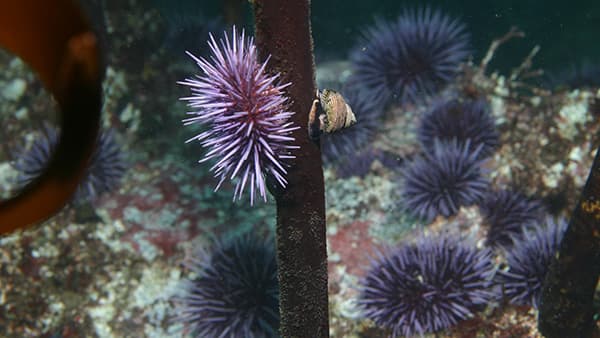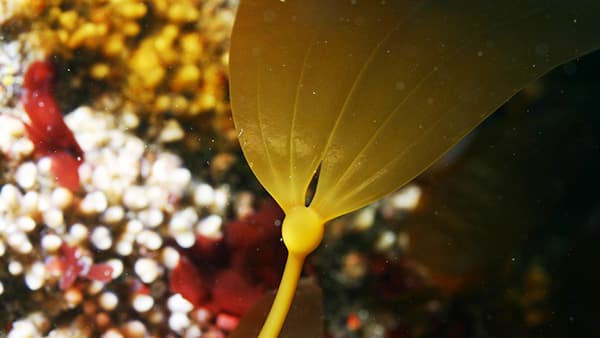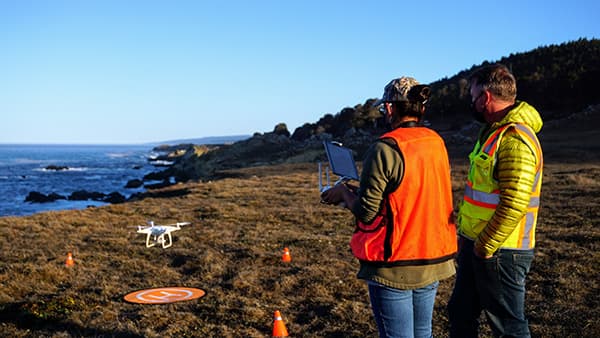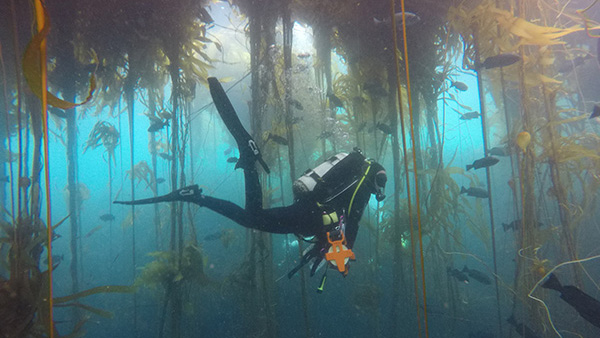Kelp forests are recognized as highly dynamic ecosystems that support dense populations of fishes, invertebrates, and other algal species, and play a role in the carbon cycle. Bull kelp (Nereocystis luetkeana) is the dominant species in the sanctuary and is most abundant in the nearshore sanctuary waters along Sonoma/Mendocino counties where it grows at depths from 6 feet to just over 60 feet and attaches to bedrock reefs and boulder fields.
Kelp forests are critical habitats for supporting fisheries on the West Coast. Kelp provides habitat for threatened, protected, and endangered species like abalone and Southern sea otters; and increases local biodiversity. Kelp beds form habitats for juvenile fishes who can hide amongst kelp stalks. When it detaches and washes ashore, it becomes a food source for kelp flies, beach hoppers, and various insects. Birds such as snowy plovers, whimbrels, black phoebes, and black-bellied plovers feast on the organisms that live in the beach wrack.
Similar to terrestrial rainforests, bull kelp contributes to climate resiliency by capturing carbon from the atmosphere and exporting the carbon to deep-sea environments for the long term. Numerous natural impacts and human activities affect kelp forest environments, and kelp restoration efforts are underway in Greater Farallones National Marine Sanctuary aimed at sustaining a healthy, functional kelp forest ecosystem.





